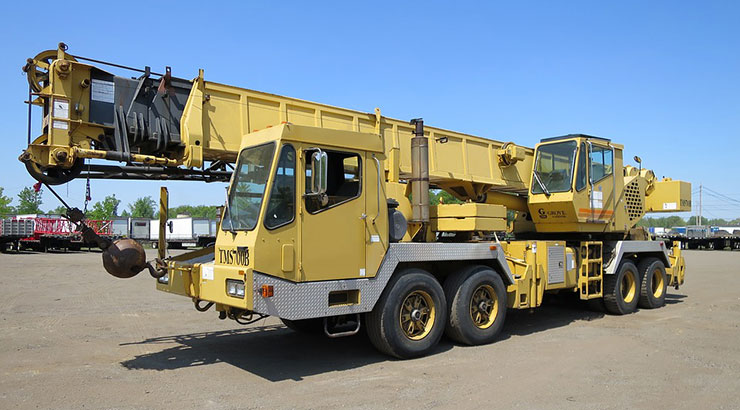Heavy Equipment
Truck Crane Overview: Features and Benefits
Truck cranes can be moved close to where materials need to be hoisted.

Cranes are incredibly powerful and indispensable construction equipment used to lift, lower or horizontally move heavy materials.
A truck crane is essentially a self-propelled crane affixed on top of a modified truck body and comprises two main parts, namely: the lower – made up of the undercarriage or chassis, and the upper – consisting of the lifting component or crane.
The two parts are linked through a turntable that allows the upper part to rotate about 180 degrees for most cranes while the more sophisticated and expensive ones can spin a full 360 degrees.
Such undercarriages are typically heavy (class 8) all-wheel drive trucks with more wheels than normal vehicles and can move on public roads as well as on moderately uneven terrain.
While older models have two engines, one for the lower and another for the upper, modern hydraulic truck cranes have a single engine that powers both the undercarriage and the lifting component.
The crane, made of steel, consists of a telescopic boom made up of hydraulically managed collapsible sections that can be extended outwards.
It can reach up to 200 feet with a lifting capacity of up to 1,179 tonnes and can be used with a hook, grab or sling for coiled or bundled material.
READ: Most Powerful Road Construction Equipment
For increased stability while static and lifting, the truck crane has outriggers that extend horizontally from the undercarriage and then vertically to the ground.
They provide reliable steadiness only on solid level ground and attempting to use the crane on soft unstable ground can be dangerous.
The greatest advantage of a truck crane lies in the ease of movement to the work site since they can travel on highways without the need for special transport equipment plus they eliminate the hustle of setup or assembly that comes with fixed cranes.
Additionally, truck cranes are more efficient especially in construction sites since they can be moved close to where materials need to be hoisted.














